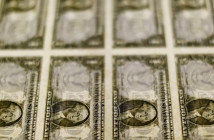Philippine economic pump priming boosted Gross Domestic Product to 5.6 percent placing the country in a better position to weather the global fallout from China’s economic woes, the National Economic and Development Authority (NEDA) said.
Higher government spending from April to June outpaced the 5-percent GDP in the previous quarter, which was the lowest in three years, Economic Planning Secretary Arsenio Balisacan said. Gross Domestic Product is the sum total of all goods and services produced by the local economy.
These developments placed the Philippines as the third-fastest growing economy in the region after China and Vietnam, and an improvement of 5 percent growth in the first quarter. However, the second quarter growth was slower than 6.7 percent during the same period last year.
Government expenditures in the second quarter rose 3.9 percent compared to 1.7 percent in first quarter. Public construction grew 20 percent, compared to a 24-percent contraction in the previous quarter, he said.
“This is a result of government’s efforts to address issues on spending bottlenecks, especially for public infrastructure, which held back growth in the first quarter,” Balisacan said.
“This significant improvement gives us more confidence about the performance of the public sector in the coming quarters of the year,” he added.
“The second quarter (growth) showed the expanse of the country’s resiliency from the prevailing weakness in the global economy,” Balisacan told reporters.
Despite the renewed confidence in government’s ability to spend, Balisacan conceded that the full-year GDP growth will not be attained. “It is very likely we will scale down the target,” Balisacan said, adding the more realistic target now is between 6.0 percent and 6.5 percent.
Data from the Philippine Statistics Authority (PSA) showed that industry grew by 6.1 percent from 5.5 percent in the first quarter. Services also expanded to 6.2 percent against the 5.4 percent in the first quarter and 5.9 percent in the second quarter of 2014. These two sectors have made up for a negative 0.5 percent growth in the agriculture sector from 1.1 percent in the first quarter and 3.4 percent in the second quarter in 2014.
Based on PSA data, the services sector – retail, restaurants, banks, and others – increased 6.2 percent during the quarter, while industry rose 6.1 percent. Household consumption also grew 6.2 percent year-on-year in the second-quarter.
“Amid ongoing events in the global economy that may affect the country, the quality and the rate of current growth of the Philippine economy give us some assurance that… we can withstand the volatile markets overseas,” Balisacan said.
Meanwhile, Finance Secretary Cesar V. Purisima, said that the public can expect stronger government in the coming months as the Aquino administration started addressing the bottlenecks.
“We expect public spending to play a bigger role in second semester performance as we have ample fiscal space in the P2.6-trillion national budget for 2015 to fund growth-inducing investments,” Purisima said in a statement.
Purisima also downplayed fears that China’s economic slowdown will significantly affect the Philippines, citing the country’s “bedrock of stability” and low trade ratio with the world’s second largest economy.
“Of 10 Asian economies, China’s economic slowdown will have the smallest impact on the Philippines. While trade with China has risen significantly in recent years, China’s share in our total trade with the world only accounts for 12 percent,” Purisima said.
Purisima said the Philippines’ externally induced growth drivers such as overseas Filipino remittances and business process outsourcing receipts have minimal links with China’s economy.



